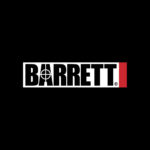While controversy and many unanswered questions continue to surround this weeks failed hostage rescue mission by Britain’s SBS in Nigeria, it may be useful to take a look back at the over all track record that both the SBS and SAS have had with these types of missions. A huge thanks to SOFREP reader Chris for compiling all of this information for us.
A mission that never actually took place to rescue Paul and Rachel Chandler from Somali pirates by the SBS in the Gulf of Aden due to ‘technical problems and security fears.’ Ransom was later paid (and they still weren’t released). Another ransom was paid and they finally were.
The successful rescue of New York Times reporter Stephen Farrell from the Taliban in Afghanistan by the SBS & SAS (reportedly ‘SBS-led’). However, Farrell’s translator, Sultan Munadi, a woman, a child, and an SAS trooper were killed in the operation.
The rescue attempt of two Italian intelligence personnel in Afghanistan by the SBS and Italian commandos. Both hostages were injured in the operation. One suffered only minor injuries and was successfully rescued, while the other, Warrant Officer Lorenzo D’Auria, succumbed to the injuries he suffered some days later.
The successful rescue of two SAS troopers who had been arrested and subsequently detained/held hostage by corrupt police at Jamiat Police Station in Basra, Iraq. Delta reportedly offered to launch a rescue mission when British leadership dragged their feet. The SAS eventually conducted a mission, retrieving the operators who had been moved to a nearby building while other British troops assaulted Jamiat Police Station as a diversion.
The successful rescue of Norman Kember, James Loney, and Harmeet Singh Sooden by the SAS in Iraq. After a long campaign to track them down, the hostage takers were reportedly intentionally tipped off and basically told to get lost: “The dilemma was solved by a telephone call directly to the hostage-takers. The SAS were on their way to get them, they were told. ‘How about you disappear,’ it was suggested. ‘And we won’t come after you.'” Canada’s JTF-2 was also said to be involved (and perhaps other coalition units as well), but it was reportedly very much a SAS-led mission.
The successful rescue of 11 members of the British Army’s Royal Irish Regiment and their Sierra Leone Army liaison officer in Sierra Leone by the SAS and SBS. You can add this one to the JSOC list as well, according to author Damian Lewis, who wrote a book on the mission (‘Operation Certain Death), and claims to have discovered since its publication that Delta played an active role in the mission as well. [Al Venter’s book, “War Dog” is also highly recommended for background on this operation. -Jack]
And of course, the successful hostage rescue conducted by the SAS at the Iranian Embassy in one of the most famous special operation missions of all time. 24 hostages were rescued, one was killed prior to the assault, and one during the assault.
I think a look at all the track record of both UKSF and JSOC demonstrates that hostage rescue is always risky, even for ‘the best’.
However, critics of the failed SBS rescue attempt in Nigeria may need to be reminded of the following. Doing nothing can be even riskier, especially when you have the option of calling on ‘the best.’
Already have an account? Sign In
Two ways to continue to read this article.
Subscribe
$1.99
every 4 weeks
- Unlimited access to all articles
- Support independent journalism
- Ad-free reading experience
Subscribe Now
Recurring Monthly. Cancel Anytime.








